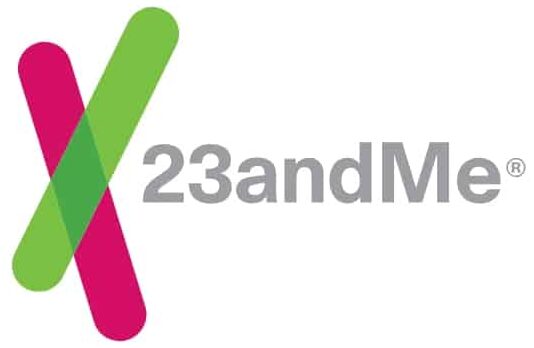
The Best DNA and Ancestry Products Compared
23andMe vs AncestryDNA
- UPDATED December 2025
Though AncestryDNA offers one of the most popular home DNA test kits on the market, 23andMe is a solid alternative. Both tests require a small saliva sample and will give you results in around eight weeks or less. We’ll compare the two kits to help you find the ultimate test for you or any of your loved ones.
Advertising Disclosure
Many or all of the companies featured provide compensation to us. These commissions are how we maintain our free service for consumers. Compensation, along with hours of in-depth research, determines where & how companies appear on our site.
A Quick DNA Test Comparison
It wasn’t that long ago that the mere thought of doing your family tree would send you into a tailspin. Even starting on that tree required that you hit the library and that you spent hours and hours doing research into the public records that were available. The internet made it much easier to do that research. Not only can you use the internet to search those public records from your home computer, but you can also join a genealogy forum and post about your family. If you have the internet at home, you can also order a home DNA test kit too.
These kits are incredibly easy to use and will show you definitive information about your family. You can check out where your early ancestors lived and get an idea of how they moved to other countries and continents over time.
FEATURED GENETICS EXPERT
The top two home kits available today are the 23andMe and the AncestryDNA kits. Each one allows you to get results in as little as eight weeks or less and lets you connect with potential family members online. Our comparison of 23andMe vs. AncestryDNA makes it easy to see the benefits of each one before ordering your own test kit.
AncestryDNA Guide
When you look for the most popular DNA Kits online, you’ll find that most sites pick AncestryDNA as the right kit for beginners. Owned by the same company behind Ancestry.com, it allows you to view your results online and to add more information from those results to your family tree. The downside to the family tree option is that you must pay for a subscription to the site. As a subscriber though, you’ll have full access to the message boards and resources available on the site. The site also allows you to set up a free trial to try out the site before becoming a full subscriber.
This is the most popular DNA kit for most users because it has a database with more than six million users already registered. Once it processes your results, the site will tell you how far your family line goes back and both where those ancestors lived and how they moved through different eras. Users can opt out and block the site from sharing their information though, which may make it difficult for you to find potential matches. With the anonymous message feature, you can send messages to matches and let them decide whether to respond.
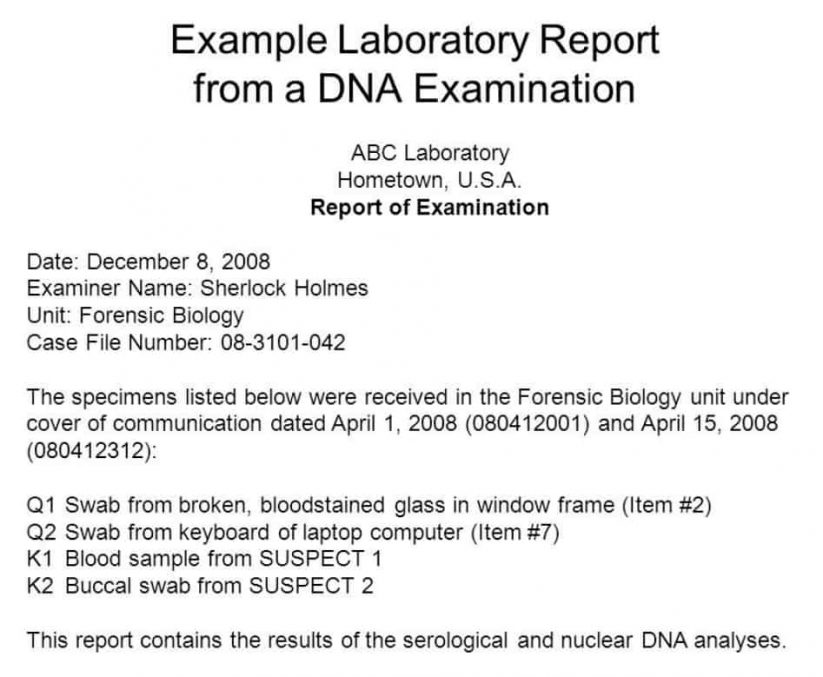
23andMe is probably the most prominent alternative to the AncestryDNA home test kit. The company made a name for itself with the introduction of health and wellness testing. Though the FDA cracked down on this option and changed the type of information that the company can provide, you can still get some solid information when you take the test. It can let you know whether you have any of the genes associated with specific medical conditions and issues such as hair loss or sleep problems. The small sample that you submit can also help you find out why you feel the way you do because of your genes.
Though the 23andMe database only has around one million samples, the number of people using this site continues to rise. You may find that this figure doubles or even triples in the coming years. As the site retains your information, it will tell you about any future matches that pop up as more people submit samples. You get an easy to use browser that lets you compare your results to other users too. If you want the health and wellness reports, you’ll need to pay extra.
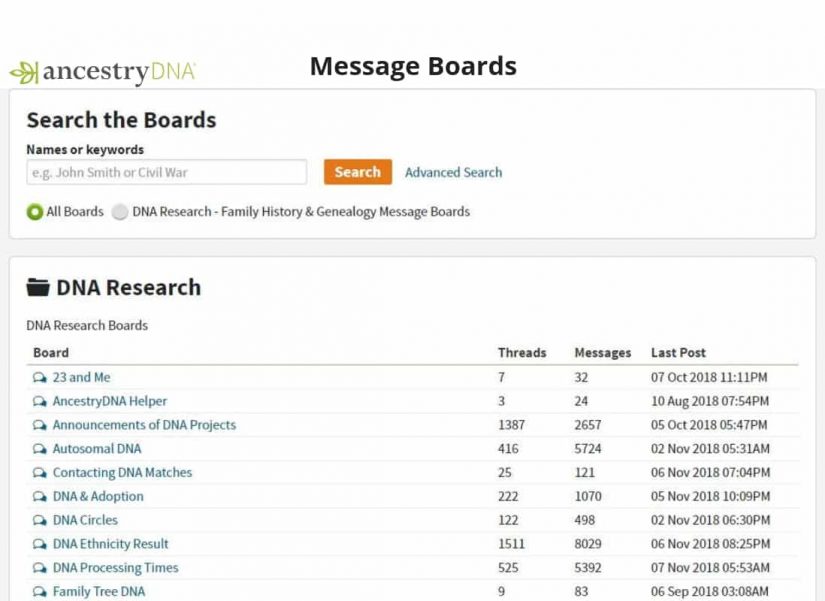
PROS
- Offers a number of potential matches thanks to the sheer number of users registered with the site
- Able to send messages to any of those matches to learn even more about your family
CONS
- Must pay extra for a subscription to the site to make use of all the features
- The site has a number of users but may not find as many matches as you expected
Bottom Line
With more than ten million registered users, AncestryDNA offers more results and potential matches than any other site does. It lets you share your results with the general public via a family tree maker.
total score
95%
23andMe Guide
23andMe offers one of the most popular alternatives to the AncestryDNA test. Designed specifically for those who want to test their DNA for familial matches and health information, it is one of the only tests on the market that does both health and wellness screenings. Those screenings can show you any traits that you have, including whether you are more likely to have curly hair or sleep troubles. It also tells you about the genes you carry that you can pass down to your kids. Some of those genes may increase your risk of suffering from heart disease, Alzheimer’s and other conditions too. You can view all that information in a convenient format.
This test also features the DNA information that you want to find. You can use your results and compare them to the results of other users and add new people to your family tree as you find them. Another benefit of this test is that it breaks the regions of the world into several major categories. It shows you what percentage of your genes come from each of those main areas. The 23andMe test is really the most popular DNA home test for those who want health information.
PROS
- Lets you view your results as they compare to those posted by its more than one million other users
- It also offers some useful health and wellness results
CONS
- The site charges extra for some features and does not let you import data that you got from other services
- It doesn't have as many users as other sites do either
Bottom Line
Though you’ll need to pay extra for your health and wellness results, most find that it’s worth it. The site helps find connections to more than one million other users.
total score
90%
Who's This For?
If your family is like most, you probably have a few stories that your ancestors passed down to you. You might hear that your grandfather was a moonshiner who ran illegal alcohol in Kentucky or that your great-grandmother immigrated to the United States on the Titanic. When you compare 23andMe vs. AncestryDNA home test kits, you can get an idea of whether either of those tests will tell you the truth. While these kits can’t verify or disprove all the stories you heard over the years, the results can give you a good place to start your research into those stories.
These tests are really best for those who have questions about their families and those who want to see some verifiable information. Let’s say that your parents or grandparents always swore that your family came directly from Ireland or Scotland to the United States. The results that you get back can tell you whether your family is 100% European or if you have genes that relate to other regions. This can show you that your family mixed with people from other parts of the world and that you have a connection to one or more other cultural groups. Both tests do a good job of separating the world into multiple regions.
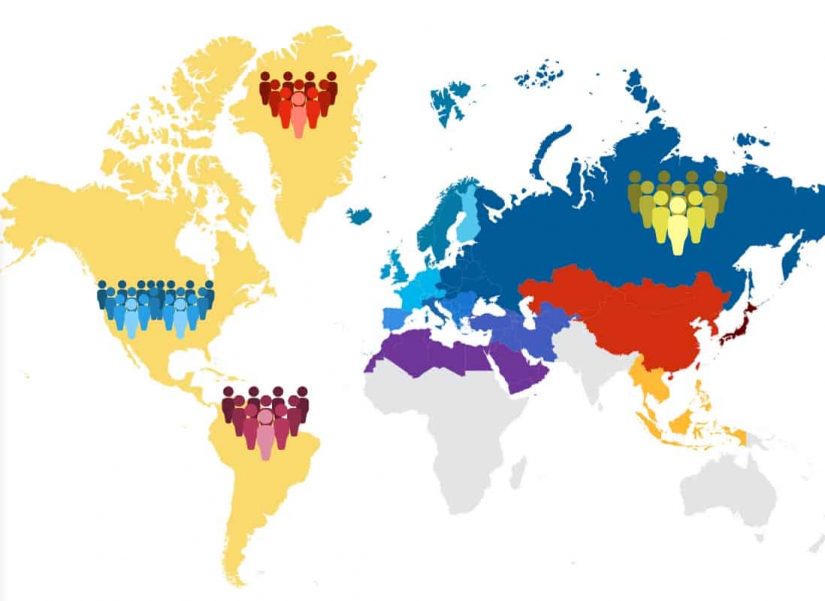
What Comes in Each Kit?
Though you should compare 23andMe vs. AncestryDNA in terms of what your results will show, you’ll find that both kits come with the same contents. Those contents include:
- Sample vial
- Sample saver
- Return packaging
- Instructions
When you buy your kit online, you should always open it to make sure that it comes with all the necessary contents. The only exception is if you bought the test for someone else such as your father for his birthday. Though the kits are shelf stable, opening the kit and exposing the contents to the light can break down the sample saver. You’ll want to keep the test sealed until you plan on giving it as a gift.
The sample vial is a small plastic container with a line on the outside. This line shows you exactly how much saliva you should add to produce a sample. The return packaging looks like a small box with a compartment inside that holds your sample. It will have a stamp on the outside that lets you drop the box into the mail without paying any extra for shipping. You may want to read the instructions before providing a sample to make sure that you understand how the process works.

When to Give DNA Kits as Gifts
- Birthdays
- Mother's and Father's Day
- Christmas
- Anniversaries
- Graduation
Should You Buy It?
You should buy either of these tests if you are serious about learning more regarding your family and aren’t afraid of what you might find. Many people took a home DNA test and discovered that they had family members they never knew about. You might learn that a distant relative such as a great-aunt had a baby who she gave up for adoption. This might lead to you discovering that you have family members living hundreds or even thousands of miles away from you. There is a chance that you might learn more than you expected about a closer relative too. We heard stories from customers who found out they had half-siblings they never knew about.
Either DNA test kit can also help you with your genealogical research. Let’s say that you heard your family immigrated from Germany to England and then from New York to California. While your results won’t show you where you came from in more recent years, they can tell you whether you have family living in any of those other states or countries. If you really want to know where your family started and whether you have any living relatives, you should take one of these tests.
Expert Tip
If you want more detailed ethnicity results, you should look for a rest that divides the world into a larger number of regions. Your results will show you the percentage of genes you have that connect back to each of those areas.

23andMe vs. AncestryDNA
Though you can look at tons of information to find the right DNA kits, you can also take our advice and simply look at how AncestryDNA compares to 23andMe. These two tests represent the most popular ones. You can also use the “competition” second to check out some of the challengers to the home DNA market. While there are quite a few of these tests today, most shoppers find themselves drawn to these two options. We’ll go over how the two compare to each other directly in different ways, which will help you see what results you’ll get from each one.
Cost
When they are not on discount, AncestryDNA and 23andMe are the same price, $99. However, both have upsells for additional features that you can spend money on. WIth 23andme, if you want to do health testing and screening, you need to pay more than $100 on top of that base cost. With AncestryDNA charges $99 you need to purchase a $19.99 Ancestry subscription to unlock some of the cool family history features that sync with your DNA results.
Before you decide on the AncestryDNA kit though, you should keep in mind that some of the advertised features and benefits of that test are only available for members. You must become a member to create your own family tree or to use features such as DNA Circles. This feature shows you how your own genes relate to the genes of others who use the site. If you aren’t sure that becoming a member will really help you, you can sign up for a free trial and decide later whether to keep using the site. Also, keep in mind that both AncestryDNA and 23andMe are often discounted. For example, in the 2018 holiday season (as you can see in the image below), Ancestry sold their kit for only $59. 23andMe was selling it for $69.

Ethnicity and Region Estimates
When you look at a world map today, you’ll see hundreds of big and small countries located on each continent. Some home DNA tests break the world down into more regions than others, which can help you with your family research. 23AndMe uses just 31 regions in comparison while AncestryDNA uses over 150 regions. Both tests look at the DNA of people living in those regions and those who lived in those areas in the past. Your own DNA can help the test reveal whether you came from the Middle East or Asia and the percentage of genes that you have from each of those regions.
In this comparison, we give a slight edge to AncestryDNA because it shows more regions around the world. This does not mean that it shows more countries than 23andMe does though. 23andMe simply takes smaller regions and bunches them together. Your results might show that you are 31% Middle Eastern and 16% Asian. The AncestryDNA test might break those percentages down and show you the exact countries and smaller regions where your ancestors once lived.
Health Reports
When 23andMe first launched in 2015, it offered 36 different health tests and screenings that you could add to your DNA test. That number now includes more than 40 tests with plans to add even more in the future. Many people like looking at their trait results. These results show you which traits you are more likely to have based on your chromosomes such as hair texture and dimples. It also offers wellness tests that let you know whether you are healthy in general based on how well you can metabolize caffeine or run.
Most people choose 23andMe because they want the genetic carrier test. This is one of the only tests on the market for 2018 that can actually tell you whether you carry the genes that might cause you to develop certain conditions. Your results will also show you whether you have genes that you can pass down to your children. Some might get results that show they are at risk of suffering from heart disease or high cholesterol. 23andme is the right DNA test for those who want health reports because AncestryDNA does not offer this option.
Ease of Use
If you worry about taking a DNA test because you think it requires blood or a lot of your time, think again. When you compare 23andMe vs. AncestryDNA, you’ll find that both tests are really easy to use. All you need is some clean saliva and the contents of your kit. You should avoid eating or drinking anything for at least 30 minutes before taking the test. Those who smoke should avoid cigarettes for at least 30 minutes too. Once you produce enough saliva in your mouth, you’ll carefully spit into the included sample vial until that liquid reaches the fill line. You can then carefully close the sample and stabilize it before placing it in the return packaging. Both AncestryDNA and 23andMe offer tests that are easy to use.

Tips for Collecting Saliva
- Try swallowing multiple times to activate your saliva glands
- Consider drinking a glass of water and waiting 30 minutes before taking the test
- Take the test later in the day instead of early in the morning
- Close your eyes and think of your favorite food
- Listen to the sound of running water for a few minutes
Paternal and Maternal Genealogy
There is a wide range of DNA tests that look at either your paternal or maternal genetic materials. Though AncestryDNA once offered a maternal test, it discontinued this option after finding that the cost was too high and that it did not give users as much information as they wanted. It does still offer paternal DNA testing, though this option is only available for male users. This test will look at the genes that men in your family passed from one generation to the next generation. It does not give you any information about your mother’s family line though.
23andMe offers a different type of genetic testing. When it takes your sample, it compares that sample to those found in its database. This can help the company find how your results compare to those who currently live in different regions and how the results compare to those submitted in the past. You might like this type of test because it lets you see whether you still have family members living in those regions. We have to give the winner in this section to AncestryDNA because it offers different types of testing and can give you the same or similar results to those you would get from 23andMe.
Matching Relatives
One reason you may want to do a DNA test is that you want to find living relatives. This is especially true of those who were adopted or had family members adopted out. Both 23andMe and AncestryDNA have a feature that lets you search for matching relatives. Both sites also give you the option of connecting with those relatives in an anonymous way. You can decide exactly how much information that you want to share and decide whether to take your conversations offline later. AncestryDNA gets a slight nod in this category because it offers different ways for you to connect with those users, but 23andMe allows you to send messages for free and without paying for a membership package.
Another thing to keep in mind is how others will use these services. Most of the people using 23andMe do so because they want to do some genetic testing. They care more about their health risks and traits than they do about finding and tracking down relatives. Though you might find some matches, there is no guarantee that any of those matches will contact you.
If you want to take a DNA test and find living relatives who can tell you more about your family, you’ll definitely want to go with the AncestryDNA test. Those who use this service typically already have accounts with the site or will set up accounts when they get back their results. They are eager to learn more about their families and to connect with their possible relatives. You have a better chance of finding people who want to chat with you via Ancestry.com.
Testing Process
23andMe promises that you will get your testing kit within five days when you place an order online. You can pay extra and get the kit delivered even faster too. It also requires that you decide between the basic DNA test and the health and wellness test and that you pay upfront for either or both. You will create a new account and include the barcode found on your kit. Those working in the testing lab only see this barcode and have no way of knowing who you are. You will get an email when your results come in later. 23AndMe asks that you log in with your username and password to view those results.
AncestryDNA has a similar process that you must follow. The length of time it takes for your kit to arrive will vary based on where you live, but you should get your kit in no more than six business days. As with the 23andMe kit, you must go online and sign up for an account. This gives you the chance to sign up for a membership package at the same time. You’ll use the code on your kit, which tells the site where to post the results later. Once you get your results, you can log into your account and decide whether you want to use that information elsewhere. Both sites follow a similar process and make it easy for you to get and view your results.
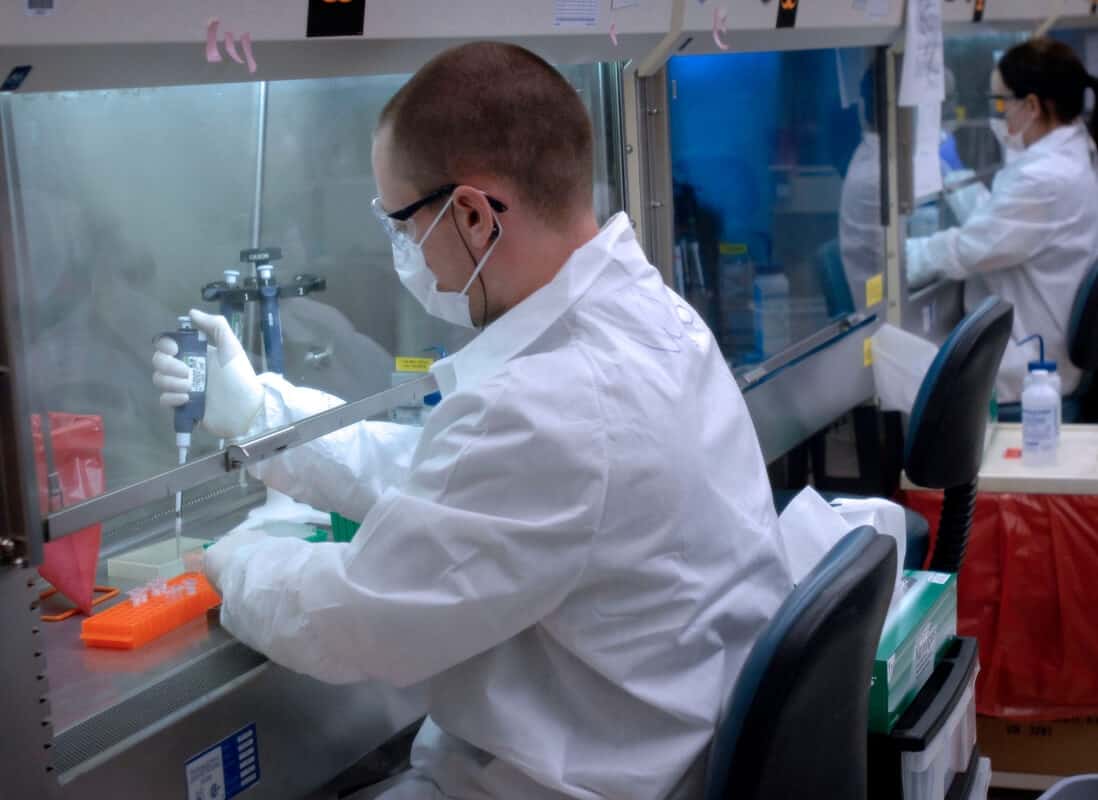
Whether you get 23andMe or AncestryDNA, you can be sure that the lab will be hard at work making sure your DNA test comes through 100% accurate.
Database Size
It’s extremely important that you consider the overall size of the database available because you want to find as much information and as many results as possible. 23AndMe is still newer than AncestryDNA and doesn’t have as many users. There are around one million samples listed in its database as of November 2018. AncestryDNA has a much larger database of more than ten million samples. Many of those who submitted their samples are registered users on the site too. This means that when you send messages, you have a greater chance of getting a response back. If you’re new to the world of genealogy you’ll probably find that you prefer the database maintained by AncestryDNA.
Subscriptions and Memberships
Ancestry.com is open every day from nine am to 11 pm and allows users to call in when they want to change or cancel their memberships. You can sign for a basic account that gives you access to all American records for $19.99 a month or for $99 for six months. If you want to access international records, you can sign up for the World Explorer plan, which costs $34.99 a month. You can get six months of access for $149 too. The best value plan is the one that gives you access to American and international records as well as access to several connected websites. This plan costs $44.99 a month or $199 for six months.
Though you can use the AncestryDNA kit and get some basic information, you can only use all the features of the site as a paid member. 23AndMe charges just one rate for the test kit and lets you use all its resources for free. While this might make you think that 23andMe comes out on top, Ancestry might win if you want to track your family based on your results.
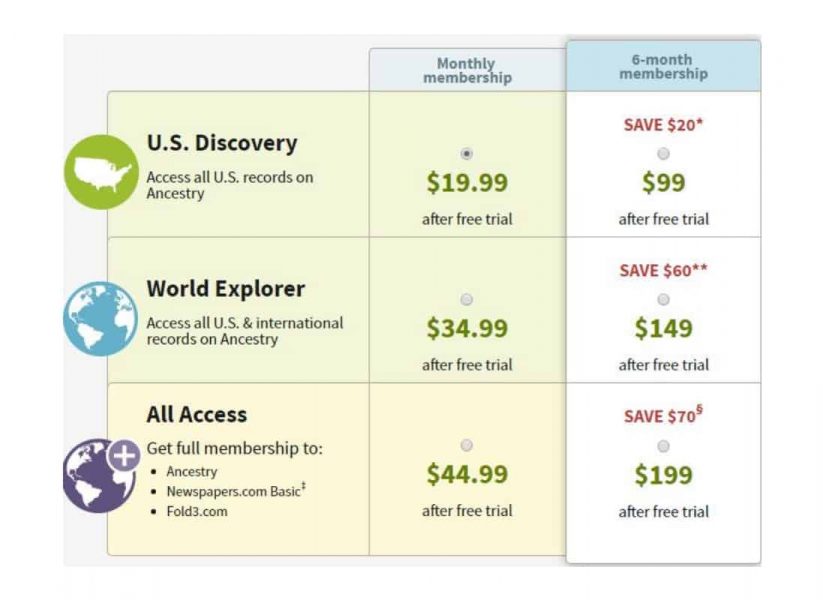
Raw Data Reports
It’s almost impossible to imagine what your results will look like until you get yours back. The basic results that you receive contain more than 500,000 individual bits of data. You shouldn’t feel surprised if you have a hard time reading through that data or with understanding what it means. This data is great for uploading to other sites though. Those sites can tell you exactly what those words mean in layman’s terms and help you understand how you can use the information in different ways. Both AncestryDNA and 23andMe give you the option of downloading your raw data and using it on another site. Neither one will let you upload the raw data that you get from other sites though. Family Tree DNA is one of the few test kits with an upload option.
Though this may not seem very important to you, downloading and uploading your data can help you create a better picture of your family. You can actually compare the results of each test together, which will help you see how accurate each piece of information really is in terms of your genetic history. Each test kit uses different regions and can show you different information. When you put all your results together, you can learn even more than you thought possible. Since both 23andMe and AncestryDNA offer raw data downloading but not uploading, the two kits tie in this category.
Public Records Access
When you first get started in the world of genealogy you may want to turn your attention to public records. The United States Census does a report every decade and lets you view who lived at a specific address during one report and their names and occupations. This lets you see whether your unmarried relatives lived together, how old they were and what they did. The census reports are a great way to find new information and to verify old information. 23AndMe is a valuable tool for those who want to learn where they came from and to find out more about their health, but AncestryDNA is the only test that allows you to also view public records.
Though you can find some public records available for free online, the Ancestry site gives you access to more than 100 million pages of documents. You can view census records as well as birth and death records. The site also offers tools for those who need help tracking their families. You can read articles and pages to see what you need to do to trace a family with an extremely common name. The site even offers tips on how to verify any data that you find and how to share that data with family members you find online. We highly recommend AncestryDNA for those who want to access public records and track their families who can also afford the membership fee.

Other Places to Find Public Records
- County and city courthouses
- Public libraries
- State libraries
- Courthouse websites
- College and university campuses
Family Tree Build Options
You can read our AncestryDNA test kit guide to learn more about this popular test and to see why we recommend it for those who want to build their own family tree. With 23andMe, you can build a basic family tree that puts your name at the far left of the page. You also have the chance to add a photo and some basic information about you, including when you were born and whether you have any children. The site then lets you build out branches that include the names and birth/death dates of your grandparents, great-grandparents and anyone else in your tree. You can add more branches to that tree as the site finds more matches.
The family tree that you can build after taking the AncestryDNA test is much more extensive. This site provides members with advanced tools that they can use to create trees with a more professional look. Not only can you add your own personal information and the information of your close relatives, but you can add new matches as you find them. One of the benefits of using this site is that you can find and verify the information that you have via the public records before adding any new names to your tree. You can also add any videos that you want and share that tree with others. Those features led to use picking the AncestryDNA test as the leading one in this category.
Opt-In and Opt-Out
Many people take a home DNA test and feel excited about what they find. Once they get their results back though, there aren’t so eager to share. How would you feel if you took the test and learned that your father was not your biological father or that you had a half-brother as a result of an affair your father had. You may find information that you don’t want to share with close relatives such as learning that your grandfather had a second family in another town or that your mother had a baby she gave away before marrying your father. If you worry at all about what you might find, you’ll want to make sure that you can opt in and out as needed.
When you do a 23andMe vs. AncestryDNA comparison, you’ll find that both testing services give you this option. While AncestryDNA offers a DNA Circles feature, 23andMe offers a similar feature that it calls DNA Relatives. Both features allow you to share any of your results with other users on the site or to stop anyone else from viewing your information. Opting out is very helpful if you just want to do a health screening or get some health information without looking at your genes. You also have the chance to opt out and stop the site from sharing your information with research and testing companies. Both sites give you the chance to opt in and out at will.
Close vs. Tight Connections
The chances are good that if you have an interest in genealogy, you already know about your close relatives. Those relatives include your parents’ siblings and their parents and aunts and uncles as well as your cousins. When you take a DNA test, you have the chance to see both close and distant relatives. Though AncestryDNA does a slightly better job of distinguishing between those relatives, 23andMe offers features that can help you see those who have a closer connection to you than others. This allows you to compare the genes you have in common with your first cousins and to locate second or more distantly related cousins. Both tests offer some good features in this area.
Getting Your Results
While you can order your test kit and get it in less than one week, you may want to know how long it takes to get your results back. Both companies state that users will get their results in a minimum of six weeks up to eight weeks or more. Your exact time frame can vary based on when you submitted your sample though. If you sent in your sample right after a major holiday, you might wait a full eight weeks or more to get an email that says your results are ready. Some users found that their results were ready in just two to four weeks. You should get an email that tells you when the lab received your sample and when that sample goes from the lab to the testing company. Both sites operate at the same speed and will send you emails to keep you informed of the process.
Customer Support
When you provide a sample, you must make sure that it is clear and that you fill the vial all the way to the indicated line. If you do not provide a full sample or have a contaminated sample, the company cannot process it. Some testing companies will make you pay for a brand new kit because it wasted time and money trying to process your results. AncestryDNA has good customer support though and will often send you a free replacement kit or offer a discount on a new kit if you need one. 23AndMe has good customer support too, but the company maintains shorter business hours. You can also get in touch with either company on Facebook and other social media sites.
EXPERT QUOTE
“AncestryDNA tends to focus on ethnicity and genealogy, while 23andMe has been more health-focused from the start. The reports might differ in how they predict your ancestry, they might be using different algorithms that could give rise to different probability pattern in your genealogy.”

DR. ISABELLE NADEAU
Ph.D and Genealogy Expert
The Competition
Our guide of the AncestryDNA kit goes into great depth about this test and the benefits of taking it. You may want to read our MyHeritage DNA kit guide too, which will help you learn more about one of the competing test kits. One of the more popular alternatives is the kit offered by National Geographic, the same company that releases the magazine of the same name. National Geographic uses a new form of technology that looks for different types of coding within your genes. It uses that information to determine where your family lived more than several centuries ago and how they migrated to other parts of the world. This test can also reveal how closely connected you are to the Neanderthals.
The Family Tree DNA kit requires a cheek swab and includes everything you need in the kit to take that swab. It allows you to create a family tree based on your results and to allow the company to use your results in its own research. Though there are fewer people using this site than others, it is both cheaper and can get your results back to your faster. Some get their results in as little as four weeks or less.

What Can a DNA Kit Tell You?
In addition to our 23andMe vs. AncestryDNA comparison, you might want to know exactly what a DNA test can tell you. While these tests cannot help you verify paternity in court or show you exactly where your family lived at any given time, the results can tell you much more than you would find after spending hours in the library. You can easily view sample results online that give you an idea of what your own results will look like. The tests typically show you:
- Ethnicity breakdown: The biggest thing that you’ll get from a home DNA test is the breakdown of your ethnicity. You can see the percentage of your chromosomes that connect to other regions. The tests also show you how you genetically match to other users.
- Genetic matches: When you view your genetic matches, you can get an idea of where you have relatives in the world and how they are related to you. Those matches can help you trace your family line and learn more about your genealogy too.
- Carrier: Some tests such as the 23andMe test can also tell you whether you are a carrier for certain diseases. That information lets you know what to talk to your doctor about and what symptoms to look for in the future.
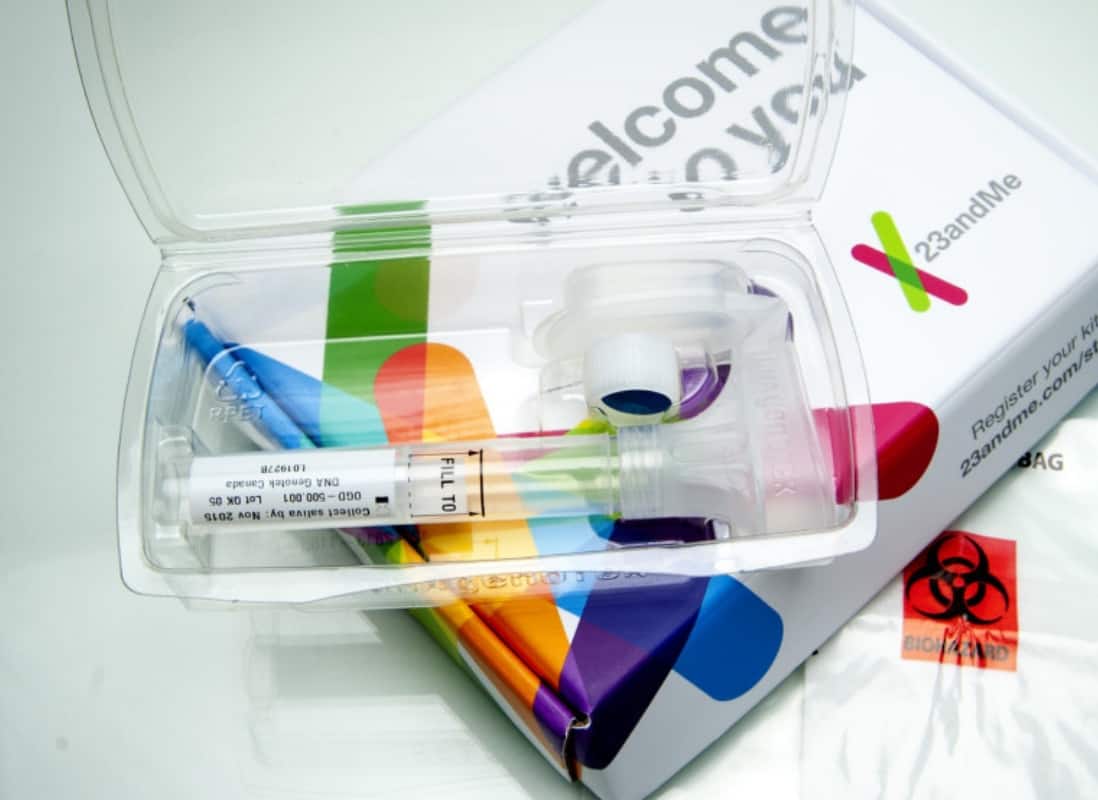
What the 23andMe kit looks like inside.
Final Verdict
When it comes right down to it, any comparison of the 23andMe vs. AncestryDNA home kits will show you that the right test for you depends on what you want to learn. The AncestryDNA test is right for those who want to find some generalized and specialized information about their families. It can tell you whether you really did come from Europe, South Africa or another region like your family always said or whether there are some hidden surprises in your family line. It also allows you to pay for a subscription, which gives you full access to public records and a message board where you can find answers to all the questions on your mind.
While the 23andMe test can also reveal a lot about your family, it’s the right test for those who want more health information. Not only can this test tell you whether you are a carrier for some of the leading diseases and health conditions, but it can also tell you whether you have a genetic risk of developing certain problems later. You’ll also get results that let you know why you might have some problems or symptoms now. A good analysis of 23andMe vs. AncestryDNA, starting from this comprehensive guide, is the best way to decide which of these popular tests you should take.


